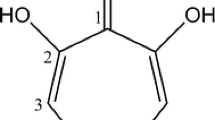Abstract
The mechanism by which pyocyanin inhibits bacterial growth was investigated. Several organisms possessing varying levels of superoxide dismutase were analyzed for their sensitivity to pyocyanin to test the possibility that reduced pyocyanin univalently reduces oxygen to superoxide, thus causing cell death. No correlation was found between the amount of superoxide dismutase possessed by an organism and resistance to pyocyanin. In addition, it was demonstrated that organisms growing anaerobically with nitrate as a terminal electron acceptor were as sensitive as, or more sensitive to the action of pyocyanin than organisms grown under aerobic conditions. We thus rule out the possibility that excess superoxide generation is the primary mechanism by which pyocyanin exerts its antibiotic effect. Oxygen electrode and radioisotope studies demonstrated that pyocyanin does inhibit bacterial respiration and active transport of solutes. Thus, it was concluded that the mechanism of action is the result of pyocyanin interacting with the cell membrane respiratory chain in such a way to render the cell unable to perform energy-requiring, membrane-bound metabolic processes such as active transport.
Similar content being viewed by others
Literature Cited
Armstrong AV, Stewart-tull DES, Roberts JS (1971) Characterization of thePseudomonas aeruginosa factor that inhibits mouse-liver mitochondrial respiration. J Med Microbiol 4:263–270
Baron SS, Rowe JJ (1981) Antibiotic action of pyocyanin. Antimicrob Agents Chemother 20:814–820
Bradford M (1976) A rapid and sensitive method for the quantitation of microgram quantities of protein utilizing the principle of protein-dye binding. Anal Biochem 72:248–254
Burton MO, Campbell JJR, Eagles BA (1948) The mineral requirements for pyocyanine production. Can J Res C25:121–128
Caltrider PG (1967) Pyocyanine, In: Gottlieb D, Shaw PD (eds) Antibiotics, vol 1. New York: Springer-Verlag, pp 117–121
De Meio RH, Kissin M, Barron KSG (1934) Studies on biological oxidations. IV. On the mechanism of the catalytic effect of reversible dyes on cellular respiration. J Biol Chem 107:579–590
Dickens F, McIlwain H (1938) Phenazine compounds as carriers in the hexose monophosphate system. Biochem J 32:1615–1625
Eagon RG, Gitter BD, Rowe JJ (1977) The inhibitory effect of the artificial electron donor system, phenazine methosulfate-ascorbate on bacterial transport mechanisms. J Supramolec Struct 7:49–59
Friedham EAH (1931) Pyocyanine, an accessory respiratory enzyme. J Exp Med 54:207–221
Hassan HM, Fridovich I (1980) Mechanism of the antibiotic action of pyocyanine. J Bacteriol 141:156–163
Lowry OH, Rosebrough NJ, Farr AL, Randall RJ (1951) Protein measurement with the Folin-phenol reagent. J Biol Chem 193:265–275
Matsen JM, Barry AL (1974) Susceptibility testing: diffusion test procedures,In: Lennette EH, Spaulding EH, Truant JP (eds), Manual of clinical microbiology, 2nd ed. Washington, D.C.: American Society of Microbiology, pp 418–427
McCord JM, Fridovich I (1969) Superoxide dismutase: an enzyme function for erythrocuprein. J Biol Chem 244:6049–6055
Miller KM, Dearborn DG, Sorensen RU (1987) In vitro effect of synthetic pyocyanin on neutrophil superoxide production. Infect Immun 55:559–563
Picker SD, Fridovich I (1984) On the mechanism of production of superoxide radical by reaction mixtures containing NADH, phenazine methosulfate and nitroblue tetrazolium. Arch Biochem Biophys 228:155–158
Prasad R, Kalra VK, Brodie AF (1976) Different mechanisms of energy coupling for transport of various amino acids in cells ofMycobacterium phlei. J Biol Chem 251:2493–2498
Schellenberg GD, Furlong CE (1977) Resolution of the multiplicity of the glutamate and asparate transport systems ofEscherichia coli. J Biol Chem 252:9055–9064
Author information
Authors and Affiliations
Rights and permissions
About this article
Cite this article
Baron, S.S., Terranova, G. & Rowe, J.J. Molecular mechanism of the antimicrobial action of pyocyanin. Current Microbiology 18, 223–230 (1989). https://doi.org/10.1007/BF01570296
Issue Date:
DOI: https://doi.org/10.1007/BF01570296




